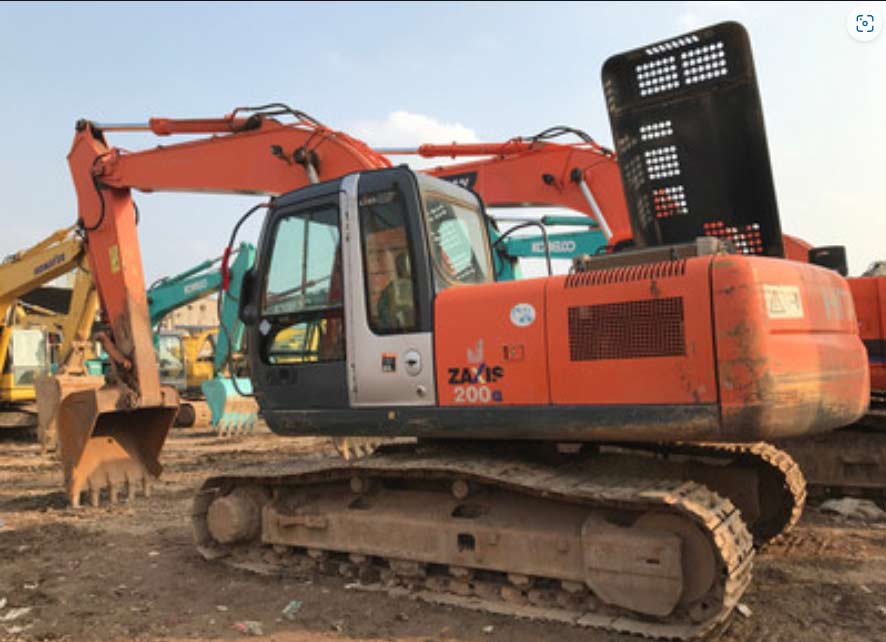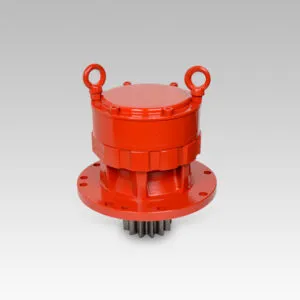
Excavator parts are essential components of the heavy machinery used in various construction and mining projects. To ensure their longevity and optimal performance, it is crucial to store them properly to prevent damage or deterioration. This article will discuss the best practices for storing excavator parts to maintain their quality and functionality.
Firstly, it is important to keep excavator parts clean and dry. Dirt, moisture, and debris can cause corrosion and rust, leading to the degradation of the parts. Therefore, parts should be cleaned thoroughly after use and stored in a dry, well-ventilated area.
Secondly, proper organization is key to preventing damage. Excavator parts should be labeled and categorized according to their type and function. This will make it easier to locate the specific part needed and ensure that it is stored correctly.
Thirdly, parts should be stored in a controlled environment with stable temperature and humidity levels. Extreme temperatures can cause materials to expand or contract, leading to warping or cracking. Similarly, fluctuating humidity levels can promote the growth of mold and mildew, which can damage the parts.
Lastly, it is essential to regularly inspect and maintain the storage area. This includes checking for signs of wear and tear, such as cracks or leaks, and addressing any issues promptly. Additionally, the storage area should be kept free of debris and clutter to minimize the risk of accidental damage.
In conclusion, proper storage of excavator parts is crucial for maintaining their quality and functionality. By following these best practices, businesses can extend the lifespan of their excavator parts and reduce the need for costly replacements.
Excavator parts are essential components of the heavy machinery used in various industries, such as construction, mining, and agriculture. These parts are designed to withstand harsh working conditions, but they can still be susceptible to damage or deterioration if not stored properly. Proper storage facilities are crucial to ensure the longevity and functionality of excavator parts. In this article, we will discuss the importance of sheltered spaces in preventing damage or deterioration of excavator parts.
Firstly, it is essential to store excavator parts in a sheltered space to protect them from the elements. Exposure to rain, snow, and extreme temperatures can cause corrosion, rust, and other forms of damage to the metal components. By storing the parts in a covered area, such as a warehouse or a storage shed, they will be protected from the elements and will remain in good condition for a longer period.
Secondly, proper storage facilities should be equipped with adequate ventilation to prevent the buildup of moisture and condensation. Moisture can lead to the formation of rust and other forms of corrosion, which can weaken the metal and eventually cause the parts to fail. By ensuring that the storage area is well-ventilated, the risk of moisture-related damage can be significantly reduced.
Thirdly, it is important to store excavator parts on a level surface to prevent any strain on the components. Uneven surfaces can cause the parts to become misaligned or damaged, which can lead to malfunctions or even accidents when the excavator is in use. By storing the parts on a level surface, such as a concrete floor or a wooden platform, the risk of damage can be minimized.
Fourthly, proper storage facilities should be organized and well-maintained to ensure that the excavator parts are easily accessible and can be located quickly when needed. This can be achieved by using a system of shelves, racks, or bins to store the parts in an orderly manner. Regular inspections and maintenance of the storage area can also help to identify any potential issues before they become serious problems.
Lastly, it is important to store excavator parts in a secure location to prevent unauthorized access or theft. Excavator parts can be expensive, and their theft can result in significant financial losses for the owner. By ensuring that the storage area is securely locked and monitored, the risk of theft can be minimized.
In conclusion, proper storage facilities are essential for preventing damage or deterioration of excavator parts. By storing the parts in a sheltered space, ensuring adequate ventilation, maintaining a level surface, organizing the storage area, and securing the location, the longevity and functionality of the excavator parts can be maximized. This not only helps to maintain the performance of the excavator but also contributes to the overall safety and efficiency of the machinery in various industries.
Excavator parts are essential components that contribute to the overall functionality and efficiency of the excavator. To ensure that these parts remain in top shape and prevent any damage or deterioration, proper storage methods must be employed. In this article, we will discuss how excavator parts are stored to maintain their quality and performance.
Firstly, it is crucial to store excavator parts in a clean and dry environment. Dust, moisture, and other contaminants can cause corrosion and weaken the parts over time. Therefore, it is essential to keep the storage area free from any debris and ensure that the parts are protected from direct exposure to the elements.
Secondly, excavator parts should be stored in a well-ventilated area to prevent any buildup of condensation. This can be achieved by using open shelves or racks that allow air to circulate freely around the parts. Additionally, using desiccants or moisture absorbers can help maintain the dryness of the storage area.
Thirdly, it is important to organize the storage area in a manner that allows easy access to the parts. This can be done by categorizing the parts based on their function or type, and arranging them in a logical order. This not only makes it easier to locate the required part but also helps in preventing any accidental damage during handling.
Fourthly, excavator parts should be stored in their original packaging or wrapped in protective materials such as plastic bags or bubble wrap. This helps in preventing any scratches, dents, or other forms of physical damage that may occur during storage or transportation.
Lastly, regular inspections should be conducted to ensure that the excavator parts are in good condition and free from any signs of damage or deterioration. Any damaged parts should be promptly replaced or repaired to maintain the overall performance of the excavator.
In conclusion, proper storage of excavator parts is essential in preventing any damage or deterioration that may affect their performance. By following the guidelines mentioned above, excavator owners can ensure that their parts remain in top shape and continue to provide optimal performance for an extended period. Regular maintenance checks and inspections should also be carried out to identify any potential issues and address them promptly. By taking these measures, excavator owners can extend the lifespan of their equipment and minimize the need for costly repairs or replacements.
Excavator parts are essential components of the excavation process, and their proper storage is crucial to prevent damage or deterioration. In this article, we will discuss how excavator parts are stored to ensure their longevity and functionality.
Firstly, it is important to understand the various types of excavator parts that need to be stored. These include hydraulic components, such as pumps, valves, and cylinders; mechanical components, such as gears, chains, and bearings; and electrical components, such as switches, relays, and wiring harnesses. Each of these components has specific storage requirements to maintain their integrity.

Svingreduktion
Hydraulic components are particularly susceptible to damage due to their delicate nature and the high pressures they operate under. To prevent damage, these components should be stored in a clean, dry environment, away from direct sunlight or extreme temperatures. Additionally, hydraulic hoses should be coiled properly to avoid kinking or crushing, which can lead to leaks or ruptures.
Mechanical components, on the other hand, require a different storage approach. These parts should be stored in a well-ventilated area to prevent rust or corrosion. Lubrication should also be applied to moving parts to reduce friction and wear. It is essential to keep these components organized and labeled, so they can be easily identified and located when needed.
Electrical components are sensitive to moisture, dust, and temperature fluctuations. To protect these parts, they should be stored in a sealed container or plastic bag, and kept away from sources of heat or humidity. Labeling electrical components with their specific function or part number can help ensure that they are correctly installed and wired during assembly.
In addition to the storage of individual components, it is also important to consider the overall organization of the excavator parts inventory. A well-organized storage area can help prevent mix-ups or misplacement of parts, which can lead to delays in maintenance or repair work. One effective method of organizing excavator parts is to use a parts management system, which can track and label each component according to its type, function, and location.
Another crucial aspect of excavator part storage is the regular inspection and maintenance of the storage area itself. This includes checking for signs of wear or damage, such as rust, corrosion, or damage to storage containers. Regular cleaning and maintenance can help prevent these issues and ensure that the storage area remains a safe and effective environment for storing excavator parts.
In conclusion, proper storage of excavator parts is essential to prevent damage or deterioration and maintain the functionality of these components. By understanding the specific storage requirements of each type of component and implementing effective organization and labeling systems, excavator operators can ensure that their parts remain in good condition and are readily available when needed. Regular inspection and maintenance of the storage area can further help to protect excavator parts and extend their lifespan.
Excavator parts are stored in a controlled environment to prevent damage or deterioration. This includes storing them in a dry, clean, and well-ventilated area to protect them from moisture, dust, and other contaminants. Additionally, parts are often stored on shelves or racks to keep them off the ground and away from potential damage. Regular inspections and maintenance are also performed to ensure that the storage conditions remain optimal and that any potential issues are addressed promptly.